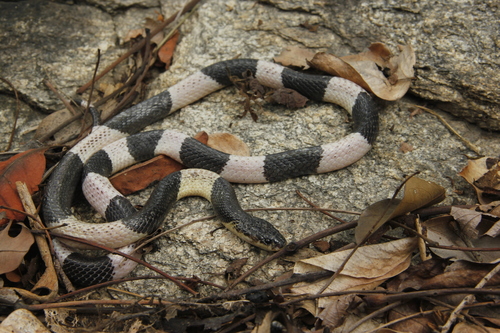
Malayan krait
The Malayan krait stands out with its bold black and white bands, a nocturnal hunter in Southeast Asia's forests. This venomous snake, preying on other snakes, is crucial for ecosystem balance. Its elusive nature and striking appearance make it a fascinating subject of study.
Length: 1.097 m
Size
Blue, Black, White
Color
Low
Aggression
Least Concern
Conservation Status
Unknown
Population Trend
Characteristics
Bungarus candidus, known as the Malayan krait, is a venomous snake found in Southeast Asia. It is predominantly nocturnal and prefers lowland forests, but it can also be found near human habitation. The species is easily recognized by its striking black and white banding. It preys mainly on other snakes and small vertebrates and plays a vital role in controlling their populations.
Distribution Range of the Malayan krait
Bungarus candidus, commonly known as the Malayan krait, is native to Southeast Asia. Its geographical distribution includes countries such as Thailand, Malaysia, Indonesia, Vietnam, and Laos. It is primarily found in the southern parts of these countries, particularly on the islands of Java, Sumatra, and Borneo.
Malayan krait's Habitat
Environmental Conditions
The Malayan krait inhabits a variety of environments, typically favoring lowland regions. It is commonly found in moist environments such as forests, particularly tropical rainforests, as well as agricultural areas and villages. The species prefers regions with high humidity and warm temperatures, which are characteristic of tropical climates.
Ecological Niche
Bungarus candidus is a nocturnal species, primarily active during the night. It is a terrestrial snake that hunts small mammals, other snakes, and amphibians. The species is known for its secretive nature, often hiding under debris or in burrows during the day. Its ecological role involves controlling populations of its prey species, thereby maintaining the balance in its ecosystem. The Malayan krait is also known for its potent venom, making it an apex predator within its niche.
Copyright @ Nature Style Limited. All Rights Reserved.
 English
English